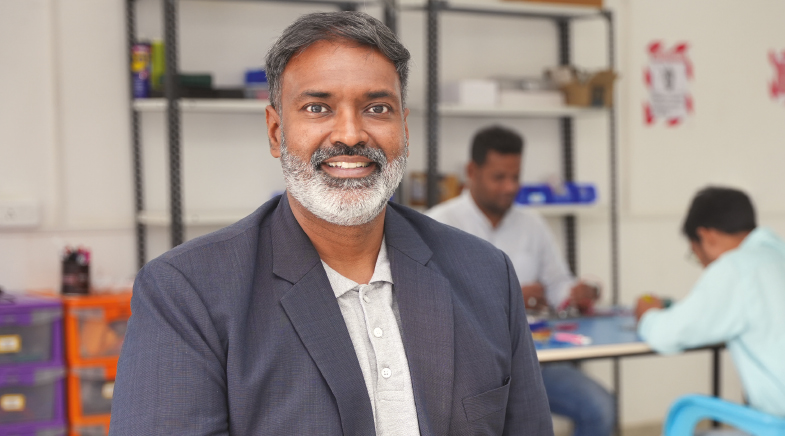How we sniffed out our Cover Story
-
- from Shaastra :: vol 01 edition 03 :: Sep - Oct 2021

Shaastra is a magazine on contemporary science and technology. We report, analyse, and comment on current events in those two realms. Since science and technology shape the future, reading Shaastra would also provide a glimpse into the future. Occasionally, we take the long view and look at a decadal horizon in technology development. Our Cover Story on breath, by Gauri Kamath, is one such instance.
The story grew out of her previous article (in the July-August edition) on point-of-care diagnostics. While researching that story, she realised the power of breath as a diagnostics tool. Interestingly, she found research groups working in India are using exhaled breath for early diagnosis of killer diseases. She was sceptical at first, but, taking a long-term perspective, realised that it could transform medical diagnosis and treatment within a decade. As a magazine that believes in the power of technology, we were excited by the story's potential.
There was more than one reason why we made it our Cover Story. The first was the potential of medical diagnosis using breath to transform healthcare. Many diseases can be treated successfully if detected early, but this is often difficult. Clinical tests are also intrusive, which forces people to avoid them. Blowing into a device is non-intrusive and convenient for patients. If scientists work this out, patients are likely to cooperate. As a forward-looking magazine, we try to pick up significant trends early, even if there are only a few people working on the problem.
There is another compelling reason why we believe this story merits your attention. It illustrates the recent change in the Indian science and technology landscape. More and more Indian researchers now work on contemporary problems, and diagnosis using breath is a case in point. However, since the Indian scientific and engineering ecosystem is relatively small, the number of such researchers is also small, and so India will still have some dependence on other countries for technology diffusion.
At Shaastra, we will occasionally look at technology development over a decadal time-scale. Our Cover Story on breath is illustrative of this.
Elsewhere, we have stories on carbon capture and storage, drugs for COVID-19, and technology and digital art. Carbon capture and storage have assumed importance in the last decade as scientists increasingly accept that human beings may have to take carbon out of the atmosphere and store it away. It is expensive, and scientists are only beginning to tackle the technologies. Aditi Jain's story describes examples of this research: one each for carbon capture, utilisation, and storage. As the story explains, these technologies have to improve substantially to be cost-effective, but a beginning is being made in the country.
Scientists now expect the COVID-19 virus to be endemic, and so finding good drugs is considered important. So far, most of our attention has been focused on vaccines, but T.V. Jayan's story shows that good drugs are a real possibility. Jayan reports on the state of drug discovery programmes on COVID-19 in India and elsewhere, and profiles the drug candidates that institutions and private companies are developing. As his story shows, several of these candidates hold promise.
Jayadevan P.K. reports on the fascinating world of digital art. Digital artists have so far been languishing on the margins because their work could be easily copied. How do you know the difference between the original and a copy? For an artist, the answer could make the difference between a good career and a life on the margins. The original fetches a huge price while the copy is cheap. Till recently, there was no easy way to establish provenance. But as Jayadevan reports, technology has come to the help of the digital artist, and some Indian artists are now becoming known around the world.
Mywish Anand explores the mysterious world of water. This molecule accounts for 70% of the Earth's surface, and is at once both simple and complex. It exhibits a flexibility of behaviour that scientists are still working hard to understand. It exists in a bewildering variety of states, and understanding the water molecule deeply can develop important applications.
Beginning with this issue, we will periodically look at the life and work of prominent scientists in India. Srinath Perur profiles Vinod Gaur, India's most celebrated geophysicist. Elsewhere, our three Guest Columnists comment on India's planned semiconductor fab, on the need to bring quality to science, and on the value of maintenance in engineering.
In keeping with the theme of our Cover Story, we hope that this edition of Shaastra will take your breath away.
Have a
story idea?
Tell us.
Do you have a recent research paper or an idea for a science/technology-themed article that you'd like to tell us about?
GET IN TOUCH













